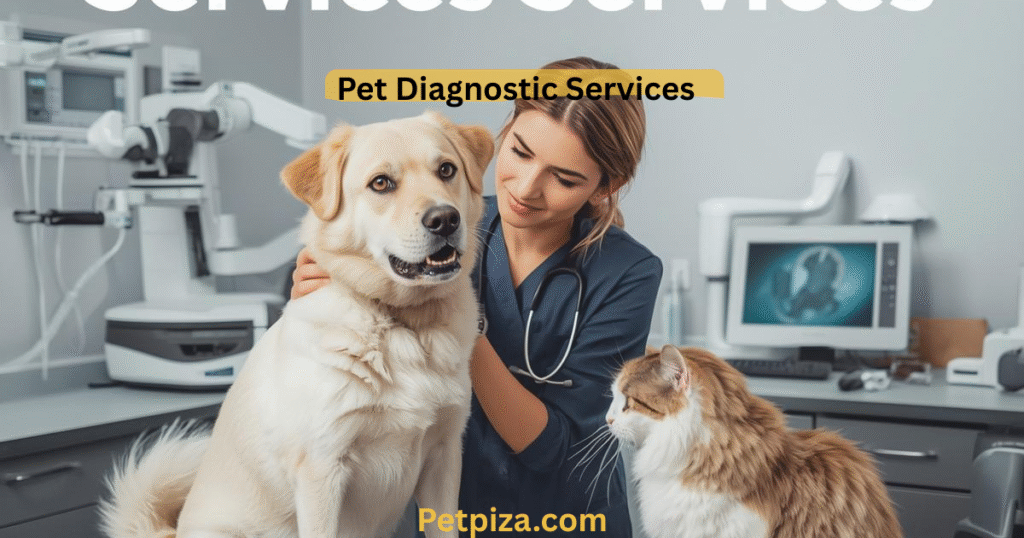As a pet parent, no one knows your pet better than you do. You can see when your pet is happy, when they are hungry, and when they just do not seem right. However, when it comes to a situation when your pet is unwell due to a sickness or injured, it is almost impossible to see and understand what they are going through. The way they can communicate is through a bark. This is one reason why pet diagnostic services plays a crucial role in animal medicine.
Cutting edge advanced diagnostic testing can help a veterinarian see beyond the physical symptoms. This advanced layer of checking can help unearth the root cause of a pet’s health condition. This blog is going to explain the world of veterinary diagnostics, the different tests available, the importance of and their role in extending the life and improving the health of your pet.
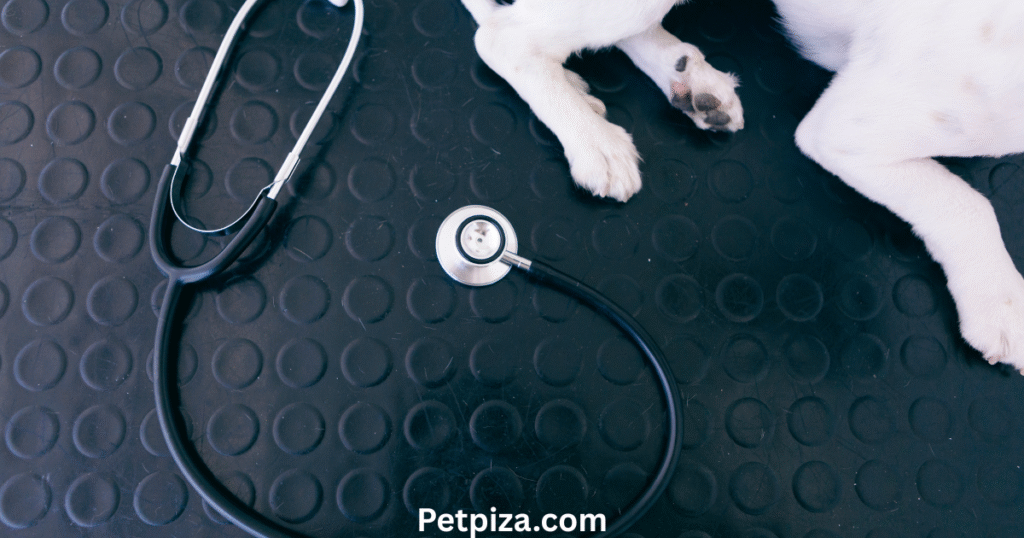
Why Are Pet Diagnostic Services So Important?
In veterinary medicine, diagnostics and and services pertaining to it tend to be along the lines of animal medicine diagnostic procedures or ancillaries. These speak to certain procedures or tests conducted in the context of animal medicine intended to unearth the underlying health anomaly, while actively monitoring its progression and outlining a treatment protocol .
Think of them as more or investigative work that is carried out in the background. You need to appreciate, that while a physical examination is one step, it only forms a piece of the whole puzzle. The totality of the diagnostics is the other missing piece, wherein all literals of data are collected, so a veterinarian can now move from question to a full pet diagnosis.
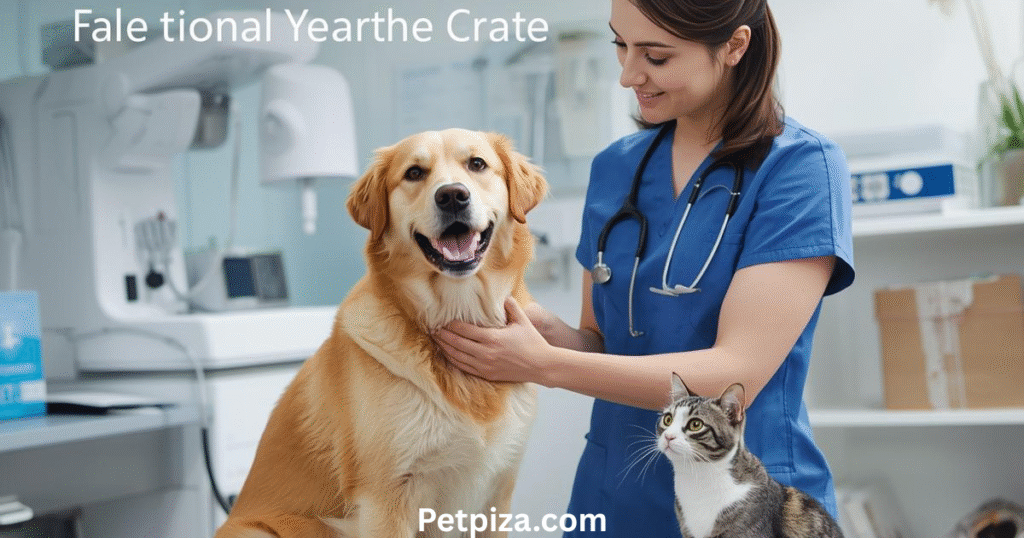
The primary benefits include:
- Pet owners gain the most from routine visits, for example the possible screening for diseases where early intervention may have far greater benefits. Many serious conditions, such as: diabetes, kidney disease, and some forms of cancer, have very few or no signs, until it may be too late. Health tests on pets can oftentimes catch these diseases many steps before a physician ever sees them.
- Diagnosis can be more costly than treatment itself when pets have vague symptoms such as lethargy, vomiting, or appetite loss. Particularly if these symptoms are chronic, they may be more tied to a more serious condition. Leaving these conditions unaddressed may lead to more expenses in the future.
- Having a set of diagnostics tests on a healthy, young adult pet can set a new baseline for the individual, which is very important for monitoring conditions. A new set of baselines can be constructed for regular sick pets as well, from which a vet can more easily identify subtle changes they may have missed.
- For chronic cases, constant checks are very important to make sure the medication, dosages and frequency remain effective and correct for conditions like heart and thyroid disease.
Types of Veterinary Diagnostics
With the development of technology, modern vet hospitals have numerous advanced tools and equipments. These tools and equipments can see into the body of pets and provide information which would otherwise be unobtainable.
1. Lab Testing (In-house and Sample Referral)
Laboratory tests involve the analysis of blood, urine, feces and other tissue samples. Most clinics have in-house labs which provide real time (critical) results in case of emergency and in more complicated scenarios, samples are sent to an external certified lab for more advanced tests.
- Complete Blood Count (CBC): This is the basic blood tests which is done to check the amount of red blood cells, white blood cells and platelets in the body. A CBC test is the basic test which is used to check for anemia and other possible infections or inflammation or in a worse case scenario, cancer. This test is a basic fundamental health check for pets.
- Blood Chemistry Panel: This test identifys and measures the numerous and various enzymes, electrolytes and chemicals present in the blood in order to check the functionality of the body organs. This test is important in order to assess the overall health of the liver, kidneys, pancreas and blood sugar level which is a step to test for diabetes.
- Urinalysis: This is a basic test that holds a lot of information. It can identify infections in the urinary tract, issues regarding the kidneys, dehydration, and diabetes. A vet can learn a lot about your pet’s metabolic and renal activity by studying the concentration of the urine and by gauging the components present in the urine.
- Fecal Examination: This test identifies intestinal parasites such as roundworms, and hookworms, and the giardia. Performing regular fecal exams are part of the proactive pet care system, more so with puppies, kittens, and animals that go outside a lot.
- Cytology and Biopsy: Having an animal’s ear, a particular skin lump, or any bodily fluid is relevant to the study, so a small portion is taken which is then covered with a microscope. Depending on whether there is infection, inflammation, or cancer, different treatments must then be applied. A more complex treatment is removing a piece of the skin to be looked at more on in-depth, especially for masses or tumors.
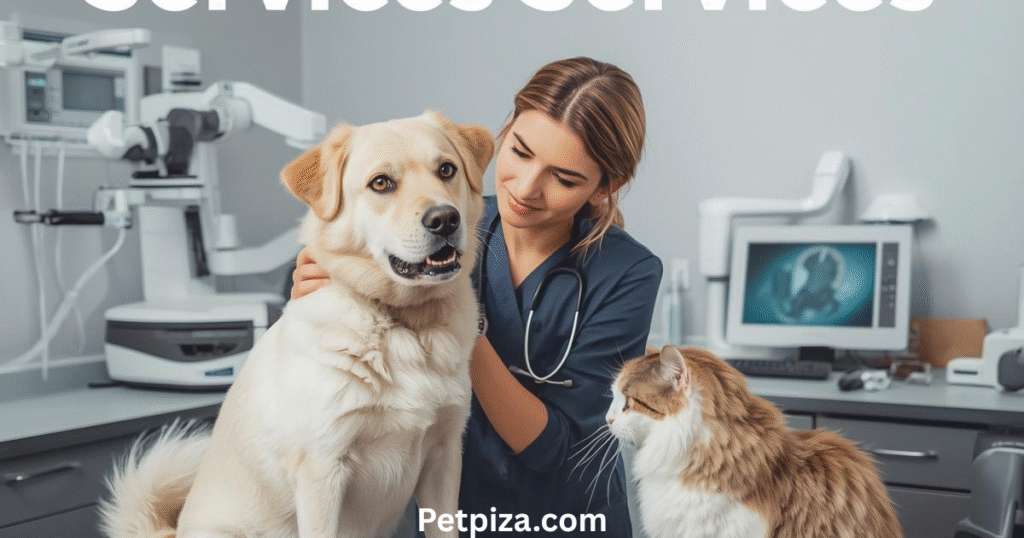
2. Diagnostic Imaging
In an animal, this refers to the means used to take pictures of the insides of their body for the purpose of ascertaining opinions on the bones, organs, and other tissues.
- Digital Radiography (X-rays): X-rays are perhaps the most ubiquitous diagnostic tool. They are fantastic for looking at dense body parts such as bones, and thus, are critical for identifying fractures, dental issues, and even arthritis. They also assess the contours and size of body organs such as the lungs and heart, as well as identify some foreign bodies which may have accidentally been ingested by the animal.
- Ultrasound: An ultrasound is the diagnostic procedure which happens to be the safest and the most non-invasive of all the diagnostic tools. It assesses soft tissues, pregnancy, and organs such as the liver and intestines and even monitors functions such as echocardiography and heart functions. These all happen with the aid of sound that the machine emits as well as with its array of sensors, and are therefore, unaffected by radiation, making them ideal for all pets.
- Endoscopy: An endoscopy is the procedure which is the least non-invasive since it requires making some external openings. In this case, the mouth and the anus are the two zones in the body which the Clinician is entirely permitted to superimpose the aid of an endoscope in. It is most commonly used for identifying and in some cases even extracting foreign bodies such as bones and tissue from the intestines, performing biopsy procedures, and even reaching inflamed zones that require surgical help in cases of Inflammatory Bowel Disease (IBD).
3. Advanced Diagnostic Services
Your primary vet may need to order advanced diagnostics, which is
usually done a specialty referral practice, for more challenging
cases.
- Computed Tomography (CT) Scan: During a CT scan, special
machines take a series of X-ray images of the body while
rotating 360 degrees. These images are then processed to form
a cross-sectional ‘slice’ of the body, which reveals much more
detail than a standard X-ray. CT scans are useful for
complicated fractures, nasal diseases, certain lung diseases, and
surgical planning for tumors.
- Magnetic Resonance Imaging (MRI): An MRI is a noninvasive
procedure that uses powerful magnets and radio waves to
capture images of the soft tissues of the body, specifically the
brain and spinal cord. It is considered the ‘gold standard’ in
medical imaging for diagnosing conditions of the nervous
system, including herniated discs, spinal cord injuries, and
brain tumors.
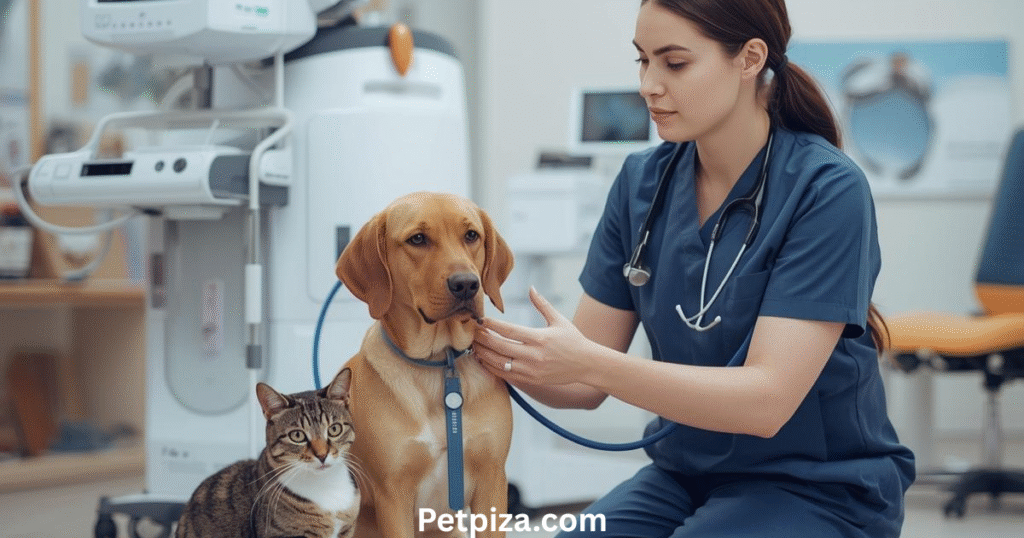
Why are diagnostics important for pets?
Just like with people, early detection saves lives, and
pets are no different. Pet health proactive care starts with
annual or semi-annual wellness checkups paired with primary
diagnostic testing.
Pets sometimes pretend to be unbothered by pain or sickness. This is an unexplainable survival behavior because, in the wild, an animal portraying weakness is an easy target. Your cat may be suffering from the early stages of kidney failure, while your dog may be developing arthritis and exhibiting no symptoms apart from chasing after a ball.
This is why the vetting process is so meticulous. Your pet shows no signs of trouble, and yet a blood sample shows signs of changes in the your pet’s kidney or liver. Preventative measures, like changes in diet, medication, and supplements, may slow down the progress of the disease. This is why, older pets must also be screened, to prevent the set of age related complications, which have a drastic increase.
Recommendations and tips for Pet Owners
As the pet owner, you must be an active participant. These recommendations may help you the most.
Take Notes. You should put an effort in knowing your pet’s normal behavior. Make sure you are watching changes in the amount of food, water, sleep, physical activity, and bathroom breaks.
- Don’t Wait: Whenever something seems off, adopting an approach of ‘wait-and-see’ is not the best course of action. Timely treatment is more effective and cost-efficient in the long run.
- Don’t Take Any Fasts: For blood panels and procedures requiring anesthesia, our veterinarian may instruct you to fast your pet (stop food intake) for a few hours. For your pet’s best interests, every effort should be made to abide by these rules, barring any exceptions.
- Inquire: If your veterinarian recommends a diagnostic test, you have every right to inquire what the test is and why it is important, and what the next course of action is. Any test that is performed has a purpose and the veterinarian should be able to aid you in the comprehension of its purpose.
- Prepare Financially: Though the cost of pet health insurance is not incredibly high, many do not have it. Consider budgeting pet insurance or setting aside a dedicated savings account for your pet’s health needs to manage possible unexpected costs.
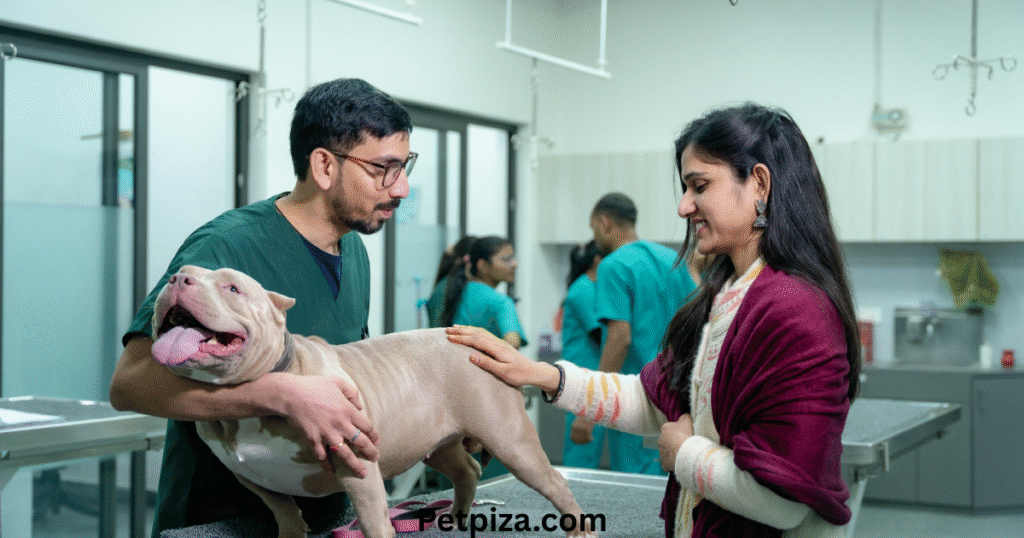
Conclusion: An Alliance for the Health of Pets
Pet diagnostic services resolve the overall concerns of a pet owner and a veterinarian’s pains of a treatment plan. Such tests and imaging do not leave the veterinarian’s approach to medicine to mere guesswork, and ensure that they provide the correct solutions and the right medicine to solve the problem.
You and your veterinarian appreciate the benefit instinctively that by offering advanced services you are ensuring that your pet enjoys a long, healthy and happy life. You are also approachable through your innovative ideas.
Direct your veterinarian to assist you in the co-creation of a wellness and diagnostic plan that meets the individual needs of your pet in regard to their age, breed, and activities. This partnership will ensure that your friend receives best-in-class care.


